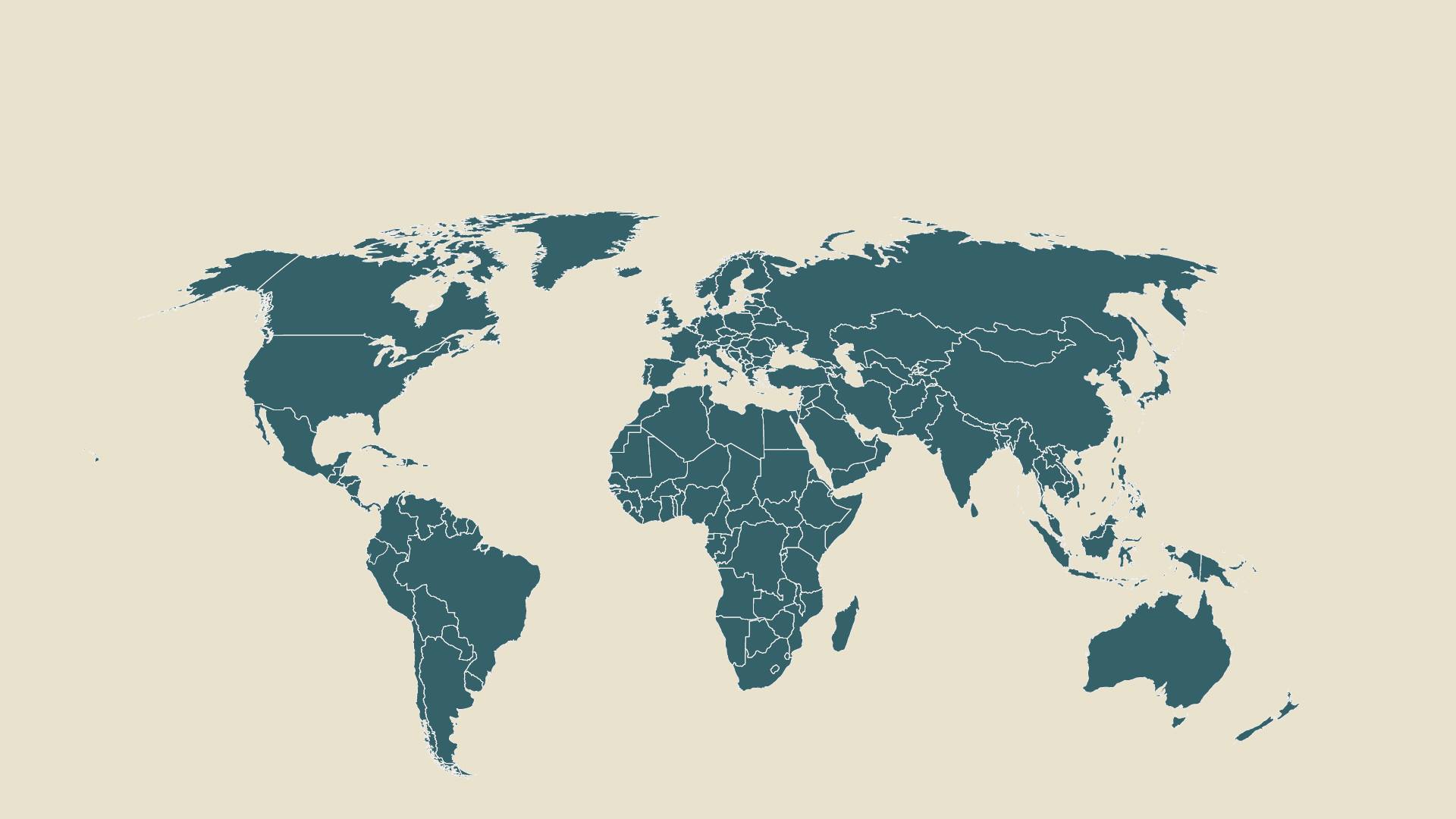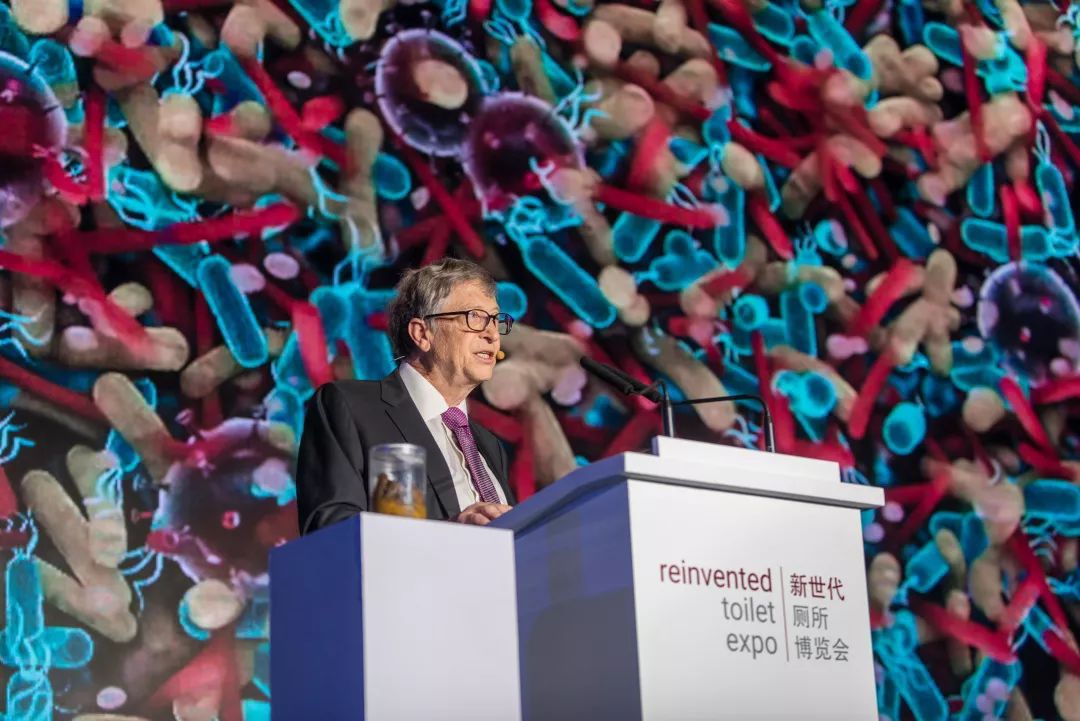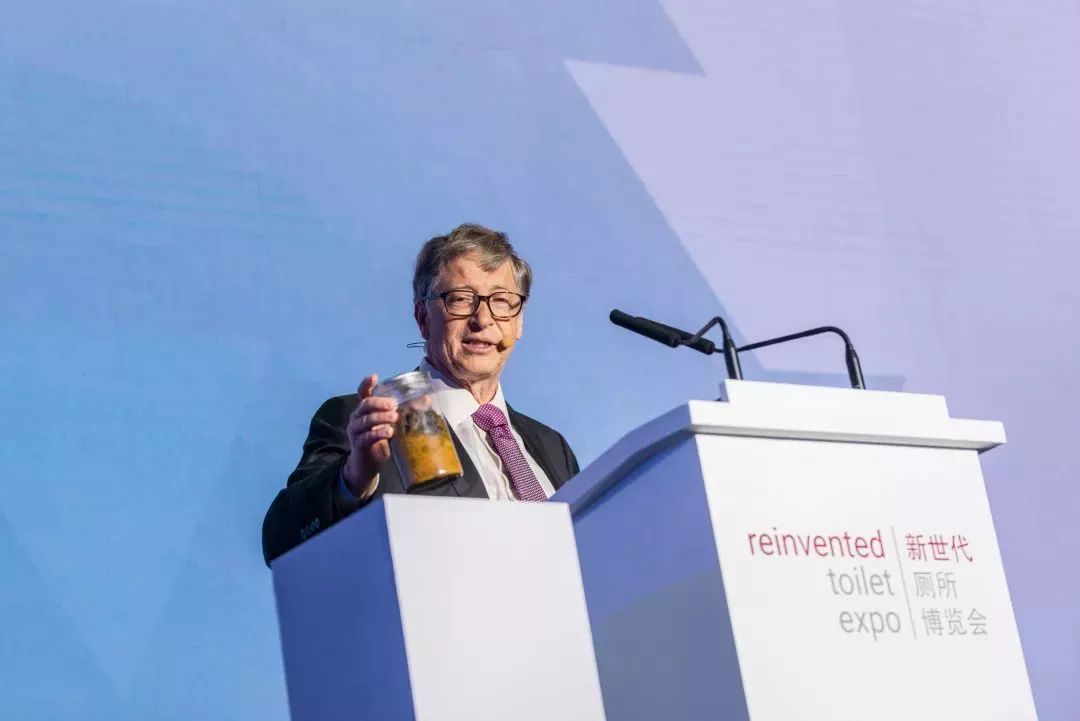 11.21 / 2018
11.21 / 2018
 64
64
你通常不会走上台站到一罐子屎的旁边……
在北京举行的新世代厕所博览会上,我用一罐粪便作为自己的演讲道具,这在人群中引起了一阵窃笑。但我此举是为了吸引人们关注一个每年导致50多万人死亡的严重问题:恶劣的卫生条件。
全世界一半以上人口使用着不安全的卫生设施。他们粪便里的病原体进入当地的水源,使人们生病。创新曾是中国经济转型背后的关键推动力,我乐观地相信,它在改善卫生条件上也能发挥相同的作用。正如我在之前的文章中写到的,新一代无下水道厕所有能力彻底改变数百万人的生活。
在之前的演讲中,我谈到这些厕所具有的潜力和前景。以下是我的发言稿全文:
早上好!谢谢田女士的介绍。我要感谢陈洲先生,感谢中国国际贸易促进委员会和中国国际商会与我们共同举办本次活动。
很高兴再次来到中国。大家共聚在新世代厕所博览会,堪称恰逢其时。几十年来,中国在提高数亿人民的健康和卫生水平方面,取得了巨大成就。开展厕所革命,体现了中国加快安全卫生建设的决心。中国正面临推广创新的分散式卫生产品、惠及全球亿万民众的契机。
虽然在座各位背景各异,来自企业、开发银行、学界、慈善等各个领域,但我们都为了一个共同的原因相聚在这里——全球还有一半以上的人用不上安全的厕所,因而无法过上健康而富有成效的生活。
如果你来自于政府,你一定希望找到如何更好地处理人类粪便这个日益严峻的大问题,尤其是在城市里。

如果你来自于企业,想必你已经意识到,随着技术的不断进步,如何满足45亿人安全用厕蕴含着巨大的商机。这么大的商机并不常有。
第二个挑战是发明一种自成一体的新型厕所——能够杀死病原体,而且具有内置的微型处理设备。我们称之为“新世代厕所”。这种厕所综合采用了多种创新技术,实现人类粪便降解灭菌,产出清洁的水和固态物质。这些固态物质可用作肥料,或无须再做处理就可以在户外安全排放。
对新世代厕所有需求的首先是学校、公寓楼和社区公共厕所等。
随着这种支撑多户使用的新世代厕所日益普及,成本不断下降,还会产生适合单户家庭使用的新世代厕所。除了资源有限的发展中国家,发达国家也有民众想要或者需要这种离网式的家用厕所。
我给大家展示一个适合家用的新世代厕所,它由瑞典工程技术公司赫博翎(Helbling)集团设计。
此外,我们的合作伙伴们还开发了能控制臭味、分离尿液和固体、保护经期健康、处理液态物质等方面的突破性技术。
不得不说,十年前,我无法想象自己会如此了解粪便。也绝对没有想到,我已经对在餐桌前畅谈厕所和粪污习以为常,以至于需要梅琳达来打断我。
短短七年中取得的成就让我倍感兴奋。本次博览会首次展示了经过试点测试的全新厕所,它能够有效地收集、管理和处理人类粪便。各位在这里看到的技术是近二百年来厕所领域最大的进步。
多亏了来自各地的大量工程师、科学家、企业和大学院校的全球协作,才让重新发明卫生系统成为可能。
而且,我们在保证安全如厕的同时,还创造了数十亿美元的新商机。
盖茨基金会从中发挥的作用是投资早期研发,为企业开辟道路,帮助其进行技术和产品的商业化,这反过来也在帮助实现我们的目标,可以说是实实在在的互利双赢。
我们预计到2030年,仅仅是第一代的新世代厕所,每年就能在全球范围创造出60亿美元的商机。如果再算上万能处理器及相关产品和服务,分散式厕所的市场潜力会更大。
正如所有的颠覆性技术一样,下一步要做的就是携手在座各位,合作推广技术。
今天,我很高兴地告诉大家,已经有越来越多的企业下单购买新世代厕所和万能处理器。克莱尔、艾科森、SCG石化和Eram Scientific等公司已经推出了他们的首批新世代厕所产品,中国中车、Sedron Technologies和Ankur Scientific也推出了他们的万能处理器产品。
其他商业合作企业也会推出相应的配套技术产品,这些在芬美意公司的创新臭味控制产品基础上开发而来。
目前共有20多家企业的创新型无下水道连接的卫生产品,已可供商业化。我们的新合作伙伴骊住集团之后会分享是他们是如何参与到这一行业中来的。这只是第一波新型卫生技术解决方案,未来会涌现出更多。
然而,仅有企业制造和销售新产品的热情是不够的。我们还需要中央和地方政府创造有利环境,出台政策法规,鼓励创新卫生服务模式,推动政府与私营部门合作。
让我备受鼓舞的是,在印度、南非、塞内加尔、孟加拉、尼泊尔等越来越多的国家,领导层开始重视用创新的方式实现厕所安全。
中国开展了厕所革命,并且正在加速推进安全厕所建设,使其具备了率先启动无下水道厕所市场的潜力。值得注意的是,今天在博览会上发布产品的克莱尔、艾科森和中国中车这三个合作伙伴都是中国企业。这显示出中国有推进离网式厕所产业化的兴趣,而且不仅可以满足中国国内需求,还可以满足国际市场的需求。
我们期待着中国尽快采纳无下水道卫生行业的最高标准——ISO30500,这有助于中国更快地树立在新一代厕所产业中的领导地位。
全球金融和发展机构也对此作出了积极的响应。世界银行、亚洲开发银行和非洲开发银行宣布了新的承诺,有望为城市全覆盖卫生项目(Citywide Inclusive Sanitation) 提供高达25亿美元的资金支持。
这些承诺可以帮助生活在城市每一个角落——包括最贫困的社区的人们,获得安全管理的卫生服务,而且可以加快离网式卫生解决方案——正如我们今天在这里所展示的——在中低收入国家的普及。
此外,联合国儿童基金会和法国国际开发署今天也宣布了新的战略和承诺,加快创新解决方案的落实。这些消息都很振奋人心。
我们一直谨慎地思考慈善的作用,其中一项更适合我们去做的就是,帮助私营部门和政府部门降低采纳新技术的门槛和风险,这样就更具规模化地解决社会问题。
我们在卫生领域也是本着同样的原则,投资于早期研发,这样其他人就能进一步开发、试点、推广和销售这些新的解决方案。盖茨基金会承诺再投资2亿美元用于持续研发,从而为贫困人口降低新型卫生产品的成本,并在新型无下水道卫生产品最能带来广泛影响的地区支持市场培育。
我们目前正处在全球厕所革命的拐点。问题已经不是我们能否发明新一代的技术,而是我们能否尽快普及这类新型离网式解决方案。虽然我们无法准确预测需要多久,但我希望是分秒必争。
谢谢大家!



I shared the stage with a beaker of poop in China
It’s not often you stand on a stage next to a sample of human feces.
Yesterday, I used a beaker of poop as a prop during my speech at the Reinvented Toilet Expo in Beijing. It caused some giggles in the crowd—but I brought it out to draw attention to a serious issue that kills more than 500,000 people every year: poor sanitation.
More than half of the world’s population uses unsafe sanitation facilities. The pathogens from their waste find their way into the local water supply and make people sick. Innovation was a key driving force behind China’s economic transformation, and I believe it can do the same for improving sanitation. As I wrote on TGN yesterday next-generation, sewer-less toilets have the potential to transform the lives of millions of people.
I spoke about the potential and promise of these toilets during my speech. Here is the full text of my prepared remarks:
Remarks as prepared
Reinvented Toilet Expo
November 6, 2018
Beijing, China
Good morning, and thank you, Ms. Tian, for that kind introduction. I’d like to thank Mr. Chen Zhou, the China Council for the Promotion of International Trade, and the China Chamber of International Commerce for co-hosting this event.
It’s great to be in China again, and it’s fitting that we are meeting here for the Reinvented Toilet Expo. In recent decades, China has made great progress improving health and sanitation for hundreds of millions of people. President Xi’s Toilet Revolution underscores China’s commitment to accelerating progress on safe sanitation. and China has an opportunity to help launch a new category of innovative, decentralized sanitation solutions that will benefit millions of people worldwide.
Although the people in this room come from varied backgrounds—government, the private sector, development banks, academia, and philanthropy—we are all here for one reason: because more than half the world’s population doesn’t have the safe sanitation they need to lead healthy and productive lives.
Those of you in government are here because you want to find a way to solve the large and growing problem of what to do about human waste, especially in urban areas.
Those of you in the private sector are here because—with new advances in technology—you see a market opportunity to meet the needs of 4.5 billion people worldwide. Opportunities of that scale don’t come along very often.
You might guess what’s in this beaker—and you’d be right. Human feces. This small amount of feces could contain as many as 200 trillion rotavirus cells, 20 billion Shigella bacteria, and 100,000 parasitic worm eggs.
In places without safe sanitation, there is much more than one small beaker’s worth in the environment. These and other pathogens cause diseases like diarrhea, cholera, and typhoid that kill nearly 500,000 children under the age of five every year.
Unsafe sanitation also puts a huge economic burden on countries that can least afford it. Globally, it costs an estimated $223 billion a year in the form of higher health costs and lost productivity and wages.
And the problem will get worse if we don’t do something about it. Population growth, urbanization, and water scarcity over the next few decades will make it even more difficult for cities in Africa and Asia—cities that are already struggling with inadequate sanitation systems—to break the cycle of disease and poverty associated with unsafe sanitation.
I became interested in sanitation about a decade ago when I stopped working full time at Microsoft, and Melinda and I began traveling more frequently to poor countries.
We visited communities where children were playing in lanes filled with human waste, where pit latrines were emptied by hand, where the stench of community toilets was so bad that people didn’t want to use them, and where families drank water contaminated with human waste.
This was a dimension of poverty we hadn’t seen before, and it motivated us to try to do something about it. It wasn’t just the degradation and suffering that people face every day doing something that’s essential and natural for all human beings. It was also because so much of what Melinda and I seek to achieve in saving and improving lives can’t be accomplished unless people everywhere have safe sanitation.
It became clear to us that if the world was going to continue making progress against the diseases of poverty, we’d have to create a new way of looking at—and eventually solving—the global sanitation crisis.
In 2009, I posed a question to a group of scientists and engineers: was it possible to leapfrog the long-accepted “gold standard” of sanitation: flush toilets, sewers, and treatment plants?
Could we come up with a more affordable approach that could kill pathogens and keep pace with the needs of fast-growing urban areas—without requiring sewer infrastructure or reliance on scarce water resources or continuous electricity to operate?
Some people were skeptical that this was achievable. I get it. it’s hard to envision a totally different way of doing something that is so deeply rooted; that just feels like “the way things are.”
Early in my own life and career, there was a time when “the way things were” in computing was a big mainframe computer that only large corporations and governments could afford. Some of us had another idea. We dreamed about personal computers that anyone could use. A lot of people told us we were crazy. But we believed in it and found other people who shared our vision. Now, people can’t imagine the world the way it was back in the day of the mainframe.
I believe it is possible to achieve something like this in sanitation, and that’s why we have invested more than $200 million over the last seven years working with partners to develop a new generation of non-sewered sanitation technologies.
There were two main things we knew we had to accomplish. The first was to make it easier and cheaper to effectively manage fecal sludge across the sanitation service chain.
This diagram shows the scale of this problem. In the Global South, 62% of fecal sludge is not safely managed. In some cities, the problem is much worse. In one city in South Asia, 97% of human waste is untreated. and many countries are not yet even reporting how much of their waste is getting treated.
Some of the untreated human waste is in unlined pit latrines that contaminates groundwater around people’s homes. Some is collected manually, or by trucks, and is dumped into nearby fields or bodies of water. and some is collected in sewers but never gets treated. The point is that we are far from the goal the world set in 2015 of everyone using a safely-managed toilet.